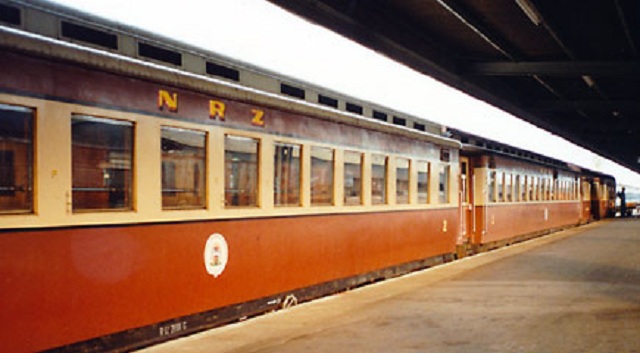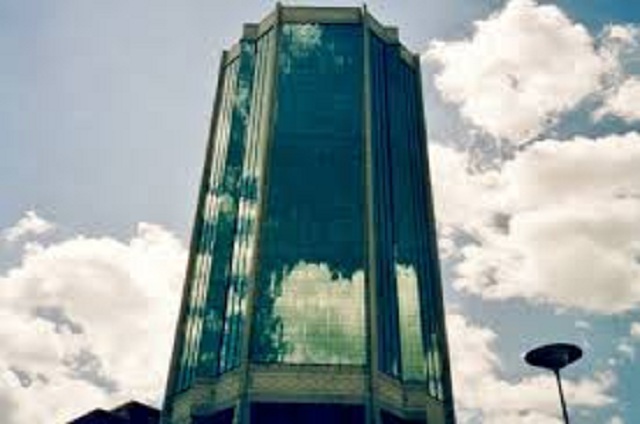Will Bulawayo rise again? The NRZ question

Morris Mpala, MoB Capital Ltd
THE business coordinates by earlier economic planners for Zimbabwe was Bulawayo. The city was strategically located as the epicentre of trade and trade movements thus the birth of the National Railways of Zimbabwe (NRZ).
Cecil John Rhodes had a vision of a rail connection from Cape to Cairo with Bulawayo forming the crucial link to the southern region. Due to the strategic nature of rail it had to be a parastatal other than a private company with privately vested interests. There was no way the rail could be individually owned as it could be prone to sabotage that could cripple the country.
Bulawayo was the core of manufacturing with major raw materials coming from within and outside the country. Cost effectively rail was the answer as up east you had steel makers, north you had agricultural produce, down south you had livestock and minerals, west you had coal deposits, around Bulawayo you had most raw materials and the population in Bulawayo was conducive to support rail investments and other major businesses.
Rail was a strategic distribution point of most products made south of Zimbabwe. Raw materials were brought to Byo for value addition before being distributed to the market.
The volume of human traffic and cargo moved by NRZ was phenomenal. It aided tourism and a charcoal black steam locomotive represented an emotional and an enigmatic iconic economic symbol.
Without trains a country didn’t look wealthy at all. KoBulawayo became a very strategic economic and a wealth symbol, central point to Southern Africa, a focal point with unprecedented responsibility of carrying the whole country in mostly manufacturing if not Africa as a whole and the network was countrywide.
The rail system was the back bone of industries and other sectors derived value from the rail infrastructure.
Employment levels created by NRZ downstream, upstream and itself as an employer, meant Zimbabwe was supported by NRZ on a larger scale.
In the process ZITF was born for people to exhibit what they produced within and without Bulawayo borders as it was the manufacturing capital mostly derived from the existence of NRZ.
I believe initial trade fairs were livestock driven as explained by the unique wider roads in Bulawayo to facilitate smooth movement of cattle.
Name any business in the southern part of Zimbabwe they all owed their existence to NRZ.
Why was ZECO in existence, G and D, Connolly, God Shoes, Bata, Tregers, Merlin, David Whitehead, Dunlop, Edgars, food retail shops, Datlabs, Delta, RMS, Bulawayo Power Station, Coal Merchants, bus companies, transport companies, the mighty CSC, Quarry stone manufacturers, heavy timber industries.
Why did quality schools sprout up? United Refineries and Olivine industries thrived on rail.
You had PPC and MacDonald bricks.
Most of these companies were stand alone manufacturers not post offices.
The first houses were built by NRZ, proximity to NRZ infrastructure.
National Blankets, National Foods and GMB silos were supported by rail development and they existed to serve NRZ. Zimplow, BCC, Ingwebu, AP Glendenning grew in leaps and bounds because of NRZ.
Farmers thrived because NRZ was fuelling economic hype. NRZ made industries believe.
Industries served at the mercy of NRZ. The economy was NRZ and NRZ was the economy. Bulawayo had to be at its best for Zimbabwe and the region to economically perform.
It explains why most high IQ levels were found in Bulawayo than any other region in Zimbabwe and Southern Africa.
You needed very sharp brains to create a comparative advantage. Even clubs like Bosso owe their existence to NRZ when you come to think of it.
It was also a training ground for a lot of expertise in apprenticeship. KoBulawayo was a competence of excellence in as far as quality manufacturing was concerned.
The culture of ubuntu was unparalleled. Despite all this processing/ manufacturing that was going on koBulawayo was always kept clean thus defining the calibre of the community in existence.
Then if NRZ sneezed, Bulawayo business caught a terrible cold. Generally most businesses in Zimbabwe caught a cold when NRZ became sickly and the economy of Bulawayo went comatose.
At its peak NRZ averaged nearly 20,000 employees. It was the transporter of choice and every business was linked to NRZ whether directly or indirectly.
All business existed because NRZ was there and very functional. NRZ had interests outside Zimbabwe and it earned foreign currency for Zimbabwe.
Put NRZ pension fund into the equation and see how much Bulawayo was being carried by NRZ in terms of infrastructural development.
Most buildings commercial and domestic were or are NRZ.
In other towns NRZ had its own compounds for its workers.
Yes Bulawayo has been NRZ but is it still NRZ or will it still remain NRZ?
Can Bulawayo still afford to remain strategically NRZ going forward?
What do you need rail for if you are not producing?
Is NRZ still relevant or should be dropped like a hot potato?
Can NRZ on its own remain the Bulawayo economy? The concentration risk on NRZ, can it still be encouraged and cultivated.
While we may not prescribe a solution to NRZ in the context of Bulawayo, policy makers, think tanks, leaders, academics, City Fathers and economic analysts, have questions to answer.
Can we now say the rail model is so yester year? Meaning NRZ is no longer Bulawayo thus let’s look at other economic models.
Should we let NRZ go down the drain? When remedies are prescribed are we going to listen? Isn’t NRZ a research area for business on over reliance on one entity?
Let’s forget about NRZ and engage road infrastructure to start a new dispensation.
Let’s forget about all the 6,000 employees? Are we ready for new investors to resuscitate the rail industry? At what cost? Can we afford the investment?
Will it make economic sense using which funding and economic model?
Should rail be left to government only? Do we have the talent to run the rail industry? Is the brain outsourced?
Do we divide NRZ into business divisions? Is the talent still there to run these business units? Do we have the will power to move on or start afresh on NRZ?
If NRZ wakes up will Byo wake up? Do we have enough business in Bulawayo to justify NRZ resuscitation? Why only NRZ when ZISCO and Hwange also face serious viability challenges to complement NRZ sustainability?
Should we privatise or commercialise NRZ and bring in foreign partners and expertise to modernise the rail sector?
Are Bulawayo people or Zimbabweans partly to blame for NRZ demise with their penchant for imports?
Emotions aside is NRZ ready for an overhaul? Do we know what NRZ wants/needs and are we economically disciplined enough to run such big projects without fear or favour?
I do not have answers but would like to get answers for as I write there is one thing I know koBulawayo is not what it used to be economically.
Is Bulawayo dead : maybe half dead
Will Bulawayo die : Never
Will Bulawayo rise : definitely but not khonapho khonapho
Is Bulawayo NRZ : probably
Are you Bulawayo : maybe not
Will it be easy : not at all
Will it be painful : precisely
Talk is cheap and only action will take us to the Promised Land. We need amadoda labo mama sibili to refocus and recreate yester year’s glory days. As long as koBulawayo pulls together as one economy it shall be well again.
IF YOU LIVE IN BYO PLEASE CONSERVE WATER
IF YOU LIVE IN ZIMBABWE PLEASE USE ELECTRICITY SPARINGLY: SOS (SWITCH OFF SWITCHES)
IF YOU LIVE ON PLANET EARTH PLEASE PRESERVE THE ENVIRONMENT












Comments